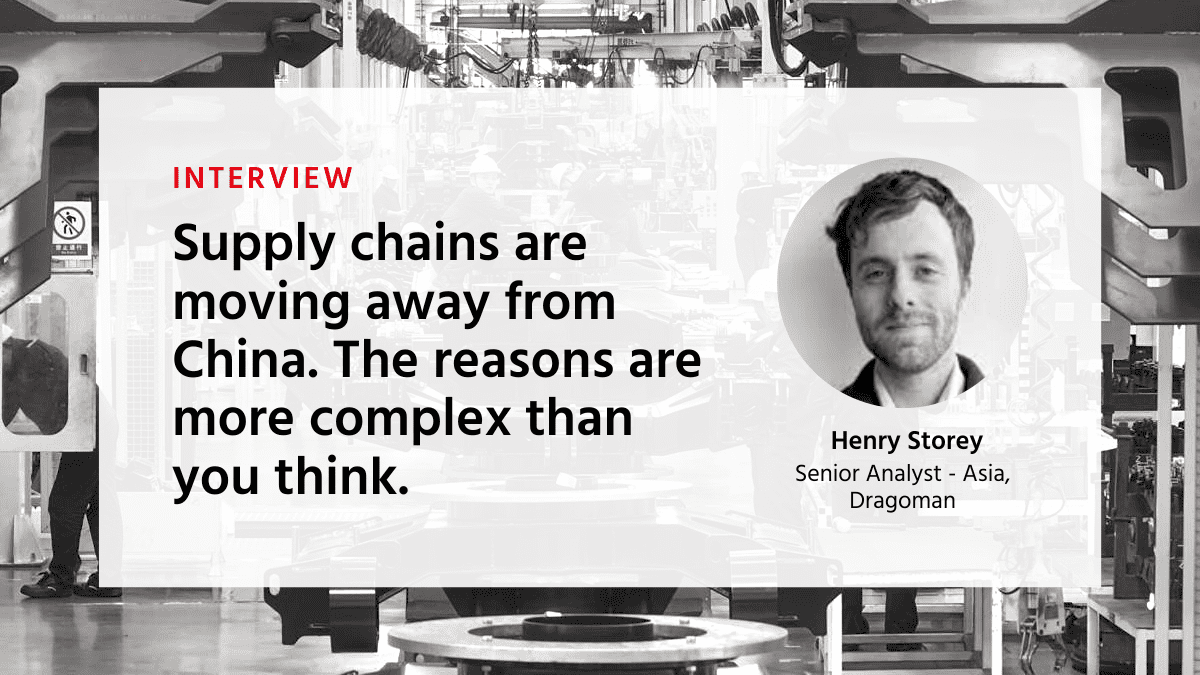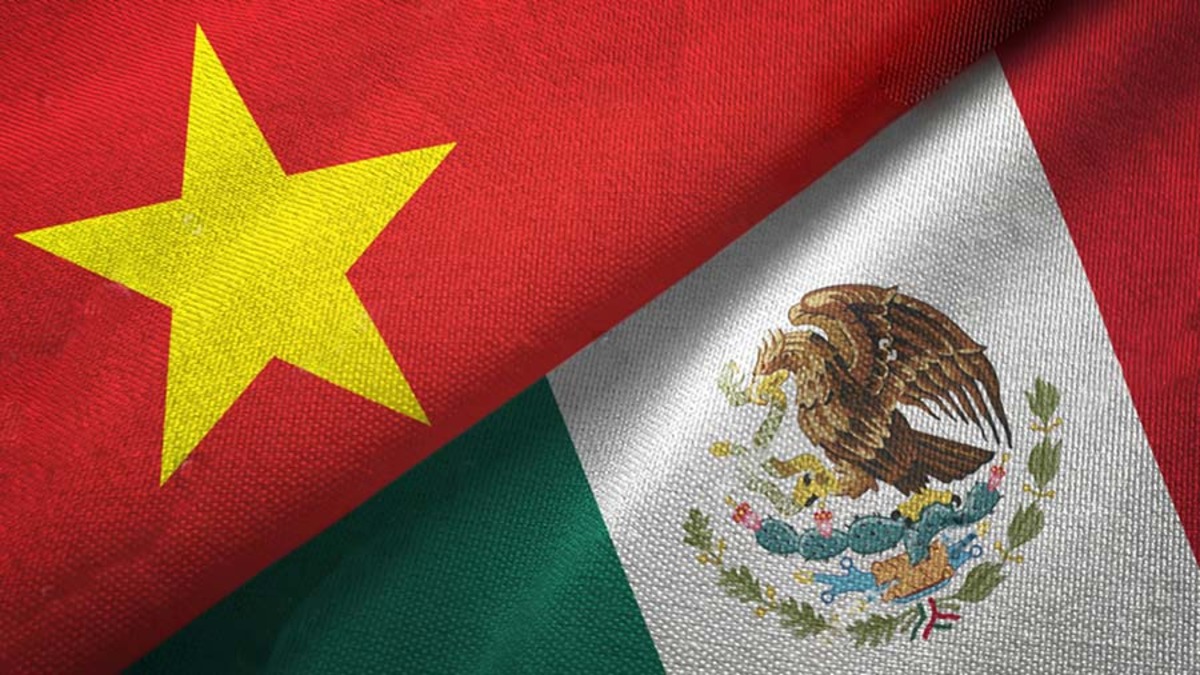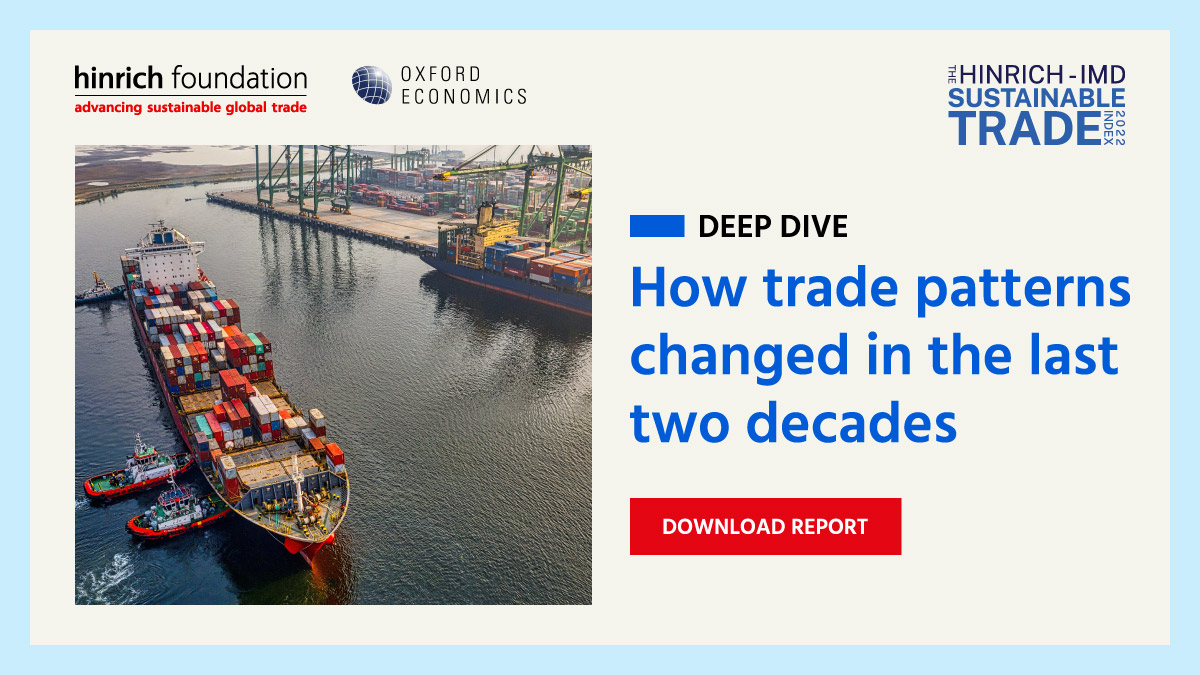Evolving global trade and supply chains have made the movement of supply chains away from China to countries like Vietnam and Mexico a topic of growing significance. This shift is influenced by a complex interplay of factors, ranging from economic considerations to geopolitical tensions. To delve deeper into the intricacies of this transformation, we turn to insights provided by Henry Storey, a senior analyst at Dragoman, a Melbourne-based political risk consultancy.
According to Storey, it is essential to understand that this shift is not a wholesale displacement of China but a dynamic reconfiguration of global supply chains. The reconfiguration is driven by a combination of economic and geopolitical factors, offering companies diverse options to optimize their supply chains. The initial driving force behind supply chains moving out of China was China's rising labor costs, particularly in labor-intensive and cost-sensitive industries like textiles. However, geopolitical factors started to play a more explicit role from 2018, with the imposition of tariffs on Chinese exports by former US President Trump and growing concerns about geopolitical conflicts.
While the reconfiguration is significant, it doesn't signify direct "decoupling." Instead, China's role in global supply chains is evolving, enabling this reconfiguration. This process has been facilitated by an increase in Chinese exports and investment. Importantly, Storey notes that Chinese businesses are adapting by relocating and optimizing their operations, reducing costs in the process.
This conversation has been condensed and edited for clarity.
Can you elaborate on the key factors driving supply chains out of China and towards countries like Vietnam and Mexico? How much of this shift is due to geopolitical tensions, and how much is motivated by economic factors?
Supply chains for some of the most labor-intensive and cost sensitive industries like textiles have already been moving out of China since the mid-2010s. This shift was almost purely driven by China’s rising wages, which have eclipsed worker remuneration in Southeast Asia and countries like Bangladesh.
Then from 2018 more explicitly geopolitical factors started coming into play. The prime example here is former President Trump’s imposition of tariffs on almost all Chinese exports. In the intervening years, COVID and escalating concerns over the possibility of conflict in the Taiwan Strait have catalysed a further imperative to “de-risk” supply chains.
The analysis mentions that while supply chains are shifting, it's not necessarily a wholesale displacement of China. Could you explain the nature of this reconfiguration and how it impacts the global supply chain network?
The displacement of China from US supply chains is undoubtedly a perceptible and growing phenomenon. China’s share of US imports peaked at 21.6% in 2017, dropping to 16.7% by 2022, and to around 14.6% in the 12 months to July 2023. Concurrently, alternative production bases like Mexico, Vietnam and India have appreciably increased their shares of the US export market. This trend has been facilitated by growing US investment, particularly in Mexico.
However, this shift is in no way evidence of direct “decoupling”. This supply chain reconfiguration has been enabled by growing volumes of Chinese exports and investment. Laura Alfaro and David Chor’s August 2023 study shows a direct correlation between exports of Chinese goods and inputs to Mexico and Vietnam in categories where China has ostensibly lost US market share.
Chinese businesses have also been able to reduce costs by relocating internally. Recent data released by research consultancy CEIC shows that since 2018, China’s inland provinces have actually increased their global exports (though not necessarily to the US) at a faster rate than Vietnam and Mexico.
Of course, for some goods related to the energy transition, especially those involving processed rare earths, the US has so far largely failed to even create an illusion of reduced reliance on China.
What impact have tariffs and sanctions, particularly those imposed by the United States, had on the movement of supply chains? How do these trade barriers influence the decision-making process for businesses?
When tariffs were first imposed and Trump’s presidency looked to be on the ropes, many US businesses adopted a wait and see approach. President Biden’s decision last year to retain tariffs on Chinese goods confirmed a more durable shift in Washington’s economic zeitgeist.
When individual businesses decided that the tariffs were likely to be enduring, their effect was to considerably amplify China’s already growing cost pressures, making the decision to relocate production easier. For businesses using China as an export base as well as selling to its vast domestic market, the decision was always going to be more complicated.
China’s logistics network, dense clusters of suppliers, integration into global supply chains, and growing strengths in innovation and unparalleled pools of skilled labor, are other enduring advantages for export-orientated companies. Another factor is the huge range of direct and indirect subsidies e.g., preferential access to energy, land and utilities provided by local governments. These factors have helped to offset rising wage costs and tariffs.
The article mentions China's enduring reliance on the US consumer market. Could you provide insights into how this reliance affects China's economic strategy and trade relationships with other countries?
The energy transition is a useful case study here to add to the Mexico and Vietnam examples. Tariffs on Chinese solar panels pre-dating the Trump presidency have long made direct exports of Chinese solar panels to the US prohibitively expensive. Still, the US solar market has been too lucrative for Chinese companies to ignore. To bypass tariffs, Chinese solar manufacturers have built factories in Southeast Asia. There have also been more cynical instances of trans-shipment, with little if any value-add taking place in third-party countries.
When combined with tariffs, certain conditions of the Inflation Reduction Act (IRA) will greatly disadvantage the import of Chinese EVs and batteries. Chinese companies are thus targeting production in third countries which will benefit from the IRA through free trade agreements with the US, like Mexico and South Korea.
In light of the supply chain reconfiguration, how is this affecting job markets and economies in Mexico, Vietnam, and China? Are there discernible winners and losers among these countries?
There are obviously many factors affecting manufacturing job markets in these countries, not least the worsening prevailing global macroeconomic conditions. Evidence is somewhat anecdotal.
With these caveats in mind, job markets in Mexican border cities like Tijuana, Juarez, and Monterrey do appear to be faring well. Skyrocketing demand for finite labor and land will hopefully also facilitate investment in areas further away from the US border.
Conversely, recent reports suggest Chinese labor hirers experiencing unusually quiet conditions, which have been partially attributed to supply chain reorientations.
Regarding the "friend-shoring" policy, what incentives or disincentives are governments offering to attract companies to relocate their operations? How effective has this policy been in practice?
Tariffs are evidently quite a potent disincentive which can induce companies to shift operations in more price sensitive and consumer-orientated sectors. Obviously this strategy is not without costs to consumers and also manufacturers e.g., through higher input costs. For the former, Alfaro and Chor estimate a 10% increase in Vietnam’s unit price of imports associated with a 5% decrease in China’s share of the US market.
Governments including Tokyo and Washington (the CHIPS Act makes US$500 million available for companies building facilities to support friendshoring) have offered direct incentives for relocating operations from China. These initiatives are probably too limited to have much of an effect.
Although not an incentive as such, the changing tenor of government conversations around economic security, deindustrialization, supply chains and industrial policy can no longer be ignored by boardrooms. Particularly when these concerns are echoed by suppliers and customers.
Defining success or effectiveness depends on the exact metric. Is the objective to increase economic security (a somewhat nebulous and subjective term), decouple, re-industrialize, build up alternative manufacturing hubs – or a combination of the above? The answer will vary at the company and sectoral level.
The analysis mentions that Mexico and Vietnam may need to develop greater indigenous value-adding capacity to remain competitive. How are these countries planning to enhance their value-added capabilities?
I can’t speak to Mexico, but the Vietnamese leadership is acutely aware of the limits of its current growth model, which so far has mostly focused on final assembly with limited value-add. The fear is that market share will be eroded by other emerging economies. Operations may also be re-shored to Western countries and automated. The paradigmatic example of Vietnam’s failure to develop greater indigenous value-added capacity is the fact that despite the Apple ecosystem’s much vaunted investments in the country, not one Apple supplier is Vietnamese.
To evolve up the value chain, Vietnam has emphasized vocational and STEM education, and technology transfer in its economic planning. Hanoi has also lent on major investors like Samsung to cultivate local suppliers and promote local leadership. Efforts to get Samsung to invest in a semiconductor manufacturing plant have so far been unsuccessful.
Vietnam will face challenges that earlier export-orientated industrializers like Taiwan and South Korea did not. These include growing Western scepticism of offshoring, fierce mercantilist competition from China and greater difficulties in protecting local industry because of generally lower tariff rates compared to earlier eras.
Regarding the potential for future policy shifts, what are the risks for businesses that have already made substantial investments in relocating their supply chains?
An obvious risk is policy continuity. It is not inconceivable that the US will remove some tariffs on China. There were powerful voices in the Biden administration calling this to help reduce inflation and put a floor under bilateral relations.
There are also risks more specific to the IRA. Battery components and critical minerals sourced from a “foreign entity of concern” will eventually be ineligible for tax credits. The US has yet to define what exactly is meant by this. The eventual definition will have implications for Ford (among other companies), which has partnered with Chinese companies to source nickel from Indonesia.
***
This article was first published by ForeignPress.org.
© The Hinrich Foundation. See our website Terms and conditions for our copyright and reprint policy. All statements of fact and the views, conclusions and recommendations expressed in this publication are the sole responsibility of the author(s).












